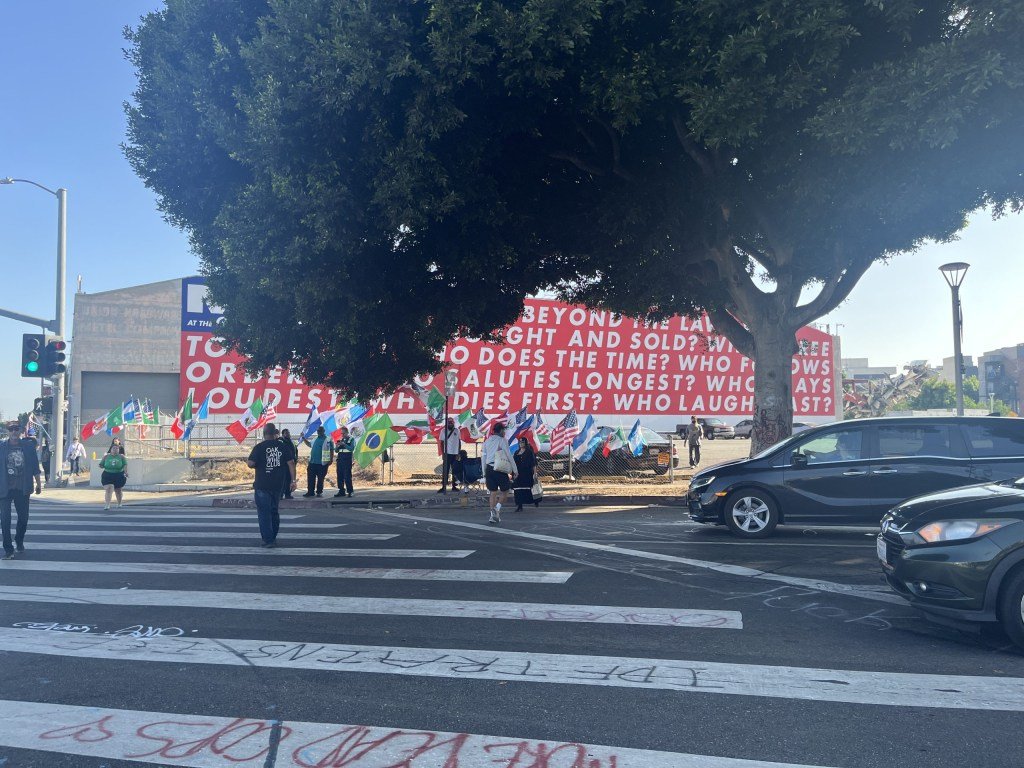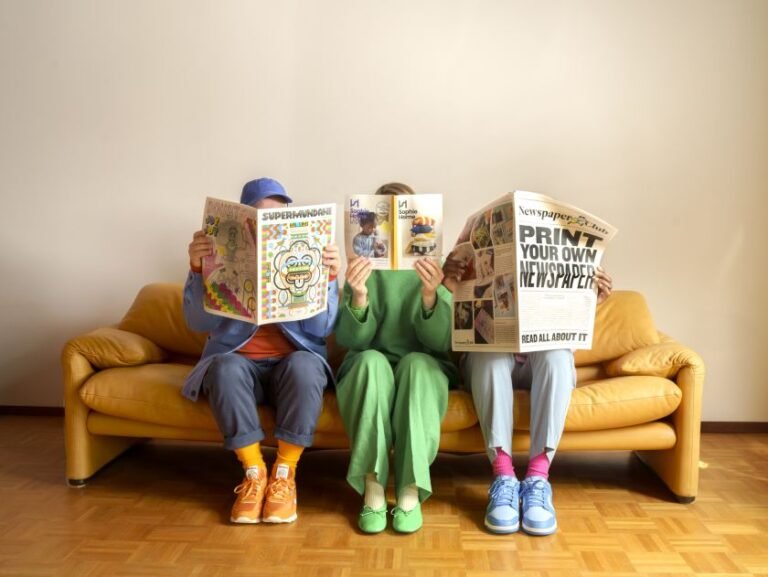

LOS ANGELES — Since June 6, police sirens, drones, helicopters, and fireworks have filled the air around my neighborhood in Elysian Park (also known as Dodgertown), a mile or so northeast of Downtown LA, where most mainstream media initially centered their coverage of the ongoing anti-Immigration and Customs Enforcement (ICE) protests.
The energy in the city is tense and electric, even in areas that are now emptier than usual. Elysian Park and Echo Park Lake on a Saturday are typically teeming with people, but since ICE raids began terrorizing the east side, making vendors afraid to work, our neighborhoods have felt eerily silent, incomplete, and less vibrant. One-third of Los Angeles’s population is foreign-born, meaning some 3 million people are potentially at the mercy of ICE and the violence of their tactics. These involve storming into businesses such as taquerias, car washes, swap meets, and high-traffic thoroughfares and dragging workers into unmarked vans with their faces concealed.
I live on the last surviving block of Chavez Ravine — a former Latino/e/x community that was destroyed to make way first for public housing, then for Dodger Stadium in the late 1950s — next door to the Naval Training center, where the Los Angeles Police Department (LAPD) has been using the ample available parking space to dock their hundreds of marked and unmarked vehicles.
The houses that were razed to pave asphalt for ballgame parking and now tactical harboring were home to Mexican-American families for generations. And every afternoon and evening this month, the presence of LAPD and ICE taunts the neighborhood. The sirens and buzzing aircraft started up around 3pm and continued late into the night, sometimes all night. Helicopters, drones, fireworks; even the coyotes yip while sirens wail.


In the early evening of Thursday, June 12, I took a 20-minute walk from my apartment to downtown at Alameda and Commercial Streets, where authorities had kettled a small crowd of protesters into a four-block radius. They blocked all four highway entrances. Despite their menacing and overwhelming presence, demonstrators played drums, blasted West Coast rap, and yelled the battle cry of the anti-ICE movement: “¡Chinga la migra!”
I found Jimmy Lopez, a lifelong Angeleno, who was holding up LA fingers for people driving below on the 101 freeway. “We were fine until [ICE] showed up,” said Lopez. “We’re out here to protest because we love our city and we want to take care of it.”
Adjacent neighborhoods Little Tokyo and Chinatown are typically full of people on weekend nights, with street seating and dense crowds, but during the first two weeks of June, they were vacated due to a curfew instated by our mayor, Karen Bass. Outside the Japanese American National Museum, Nicole Maloney’s permanent public artwork “OOMO Cube” (2014) is covered in MISSING posters, taped to the reflective surface of the cube and to the walls around the museum.

During the massive, cross-coalitional protest downtown on Saturday, June 14, artist and LA native Raul Baltazar premiered his ad-hoc work “Melt Ice” (2025), an installation featuring three stacked ice blocks with speakers playing the theme from the film The Cremator (1969), melting slowly on the asphalt, over the span of the protest. “Some [protesters] had a poetic moment, others took photos or inserted themselves by posing with the ice,” Baltazar told me. “Some hugged me, and two young White men sat silently in front of the ice for over an hour and later thanked me.”
Artist Nina Sarnelle spent weekends and afternoons visiting small local businesses in the neighborhoods of Westlake and Koreatown, distributing Know Your Rights cards with instructions on what to do if ICE raids a business. She had started documenting the protests with her camera.
“I realized that the real story is happening in a distributed way all over the city. Quietly, at dawn. It’s happening to some of our most vulnerable people. Often at the outskirts, in an industrial zone, in the parking lot or the back kitchen, on a farm,” Sarnelle told me. “It’s invisible unless a community comes together in time to point their phone cameras and scream at it.”

Though most media coverage centers the downtown area as the primary hub for protests, many other neighborhoods across the county, from Whittier to Downey to Bell, have been holding demonstrations daily and employing a variety of tactics, like forming community patrols and rapid response teams to prevent ICE and LAPD from invading.
“It seemed best to serve my own neighbors — my panadería and car wash and taco trucks had ICE raids, and it became important to focus on the area I called home,” friend and organizer Xochitl-Julisa Bermejo told me. She joined noise disruption protests at hotels that were hosting ICE agents in the San Gabriel Valley.
“People come out with instruments — I’ve seen trumpets and saxophones, but I’ve also seen people with pots and pans and cookie sheets,” she said. “We’re protecting our neighbors and protecting ourselves.”
Despite having deadlines in his own studio, artist Sam Shoemaker told me this is the only thing he can think about. “Watching ICE raid elementary schools, separate families, and drag our neighbors away is not something you should be able to just compartmentalize and put away,” Shoemaker said.
On Sunday, June 15, protests continued across town. The LAPD officers stationed at the parking lot below the stadium on my block moved to Exposition Park. During the game that evening at the Dodger Stadium, artist and singer Nezza sang the national anthem in Spanish, despite being told not to. At night, I heard fireworks instead of sirens, a quick reprieve before the next week of resistance began again in the morning.
I took the quiet for granted. On Thursday morning, June 19, I awoke to the sounds of sirens and helicopters buzzing overhead. Several neighborhood patrols had followed unmarked ICE vehicles from a raid at a Home Depot in Hollywood and back to the Dodger Stadium, where they appeared to be processing detainees in the parking lot. An eyewitness who asked to stay anonymous for fear of backlash and threats said a California Border Patrol agent told her that they prefer to process detainees outside of public view, “because the public makes it dangerous.” By mid-morning, demonstrators had assembled at Gate E at the stadium to protest the use of the ballpark as a staging site.
Raids continue across town, and communities continue to rise up in defense of their neighbors. The city of Bell, for example, gave ICE agents hell at a car wash over the weekend. Angelenos and Californians have always fought back — it’s the 60th anniversary of the Watts Rebellion, when hundreds of Black Angelenos protested police brutality and marked a meaningful turning point in the Civil Rights Movement.
“We’ve witnessed such incredible bravery in the city this month,” Shoemaker told me. “I think we are all feeling a deep appreciation for LA right now.”


